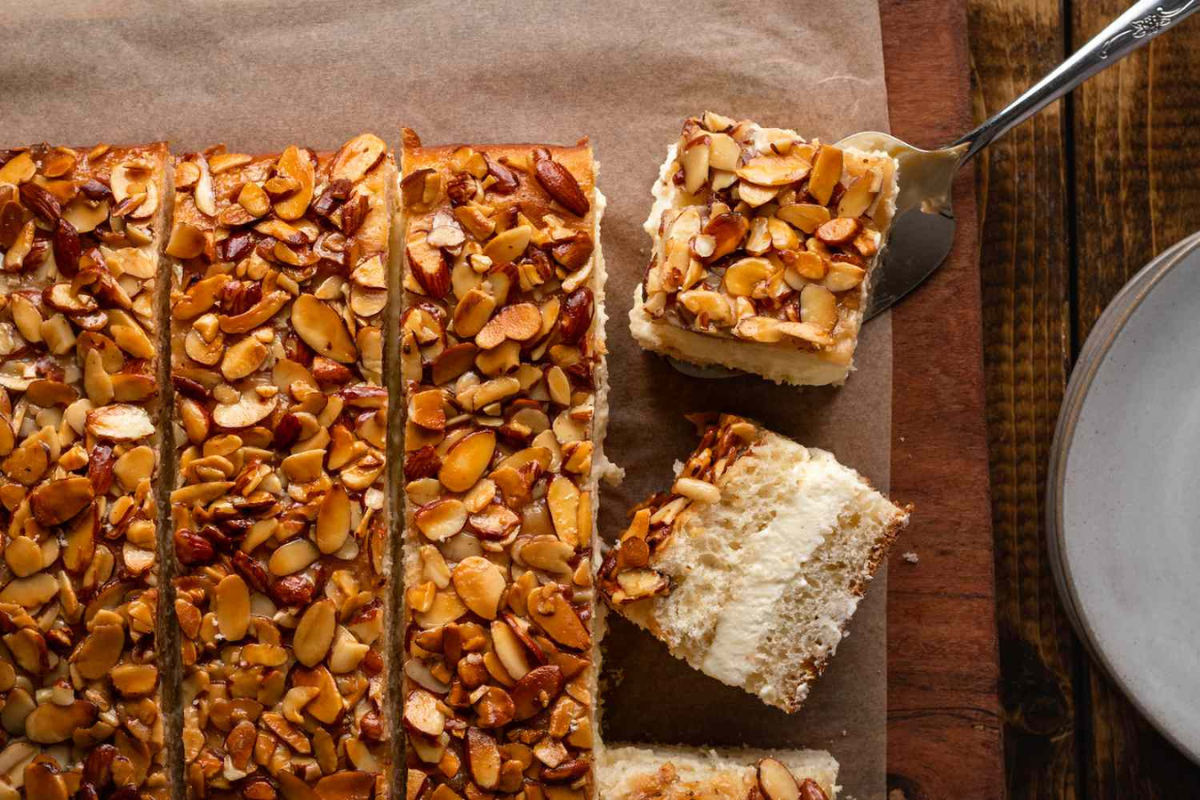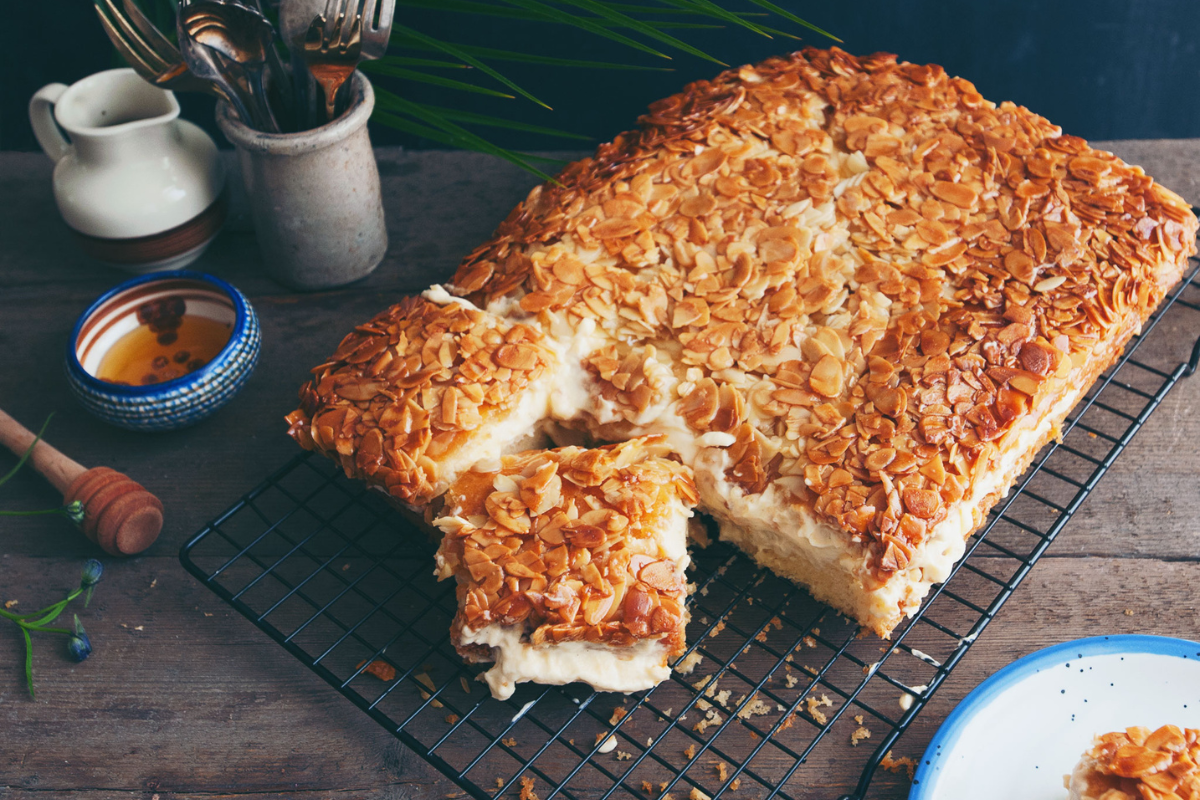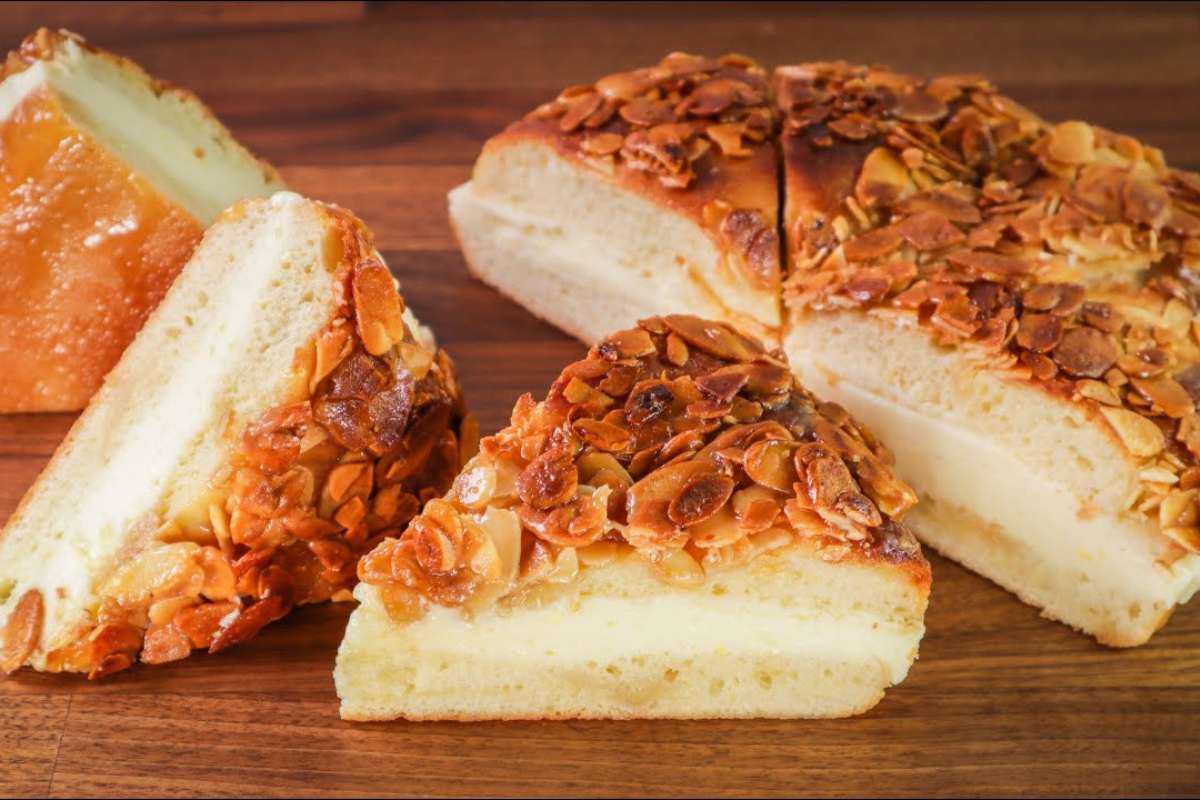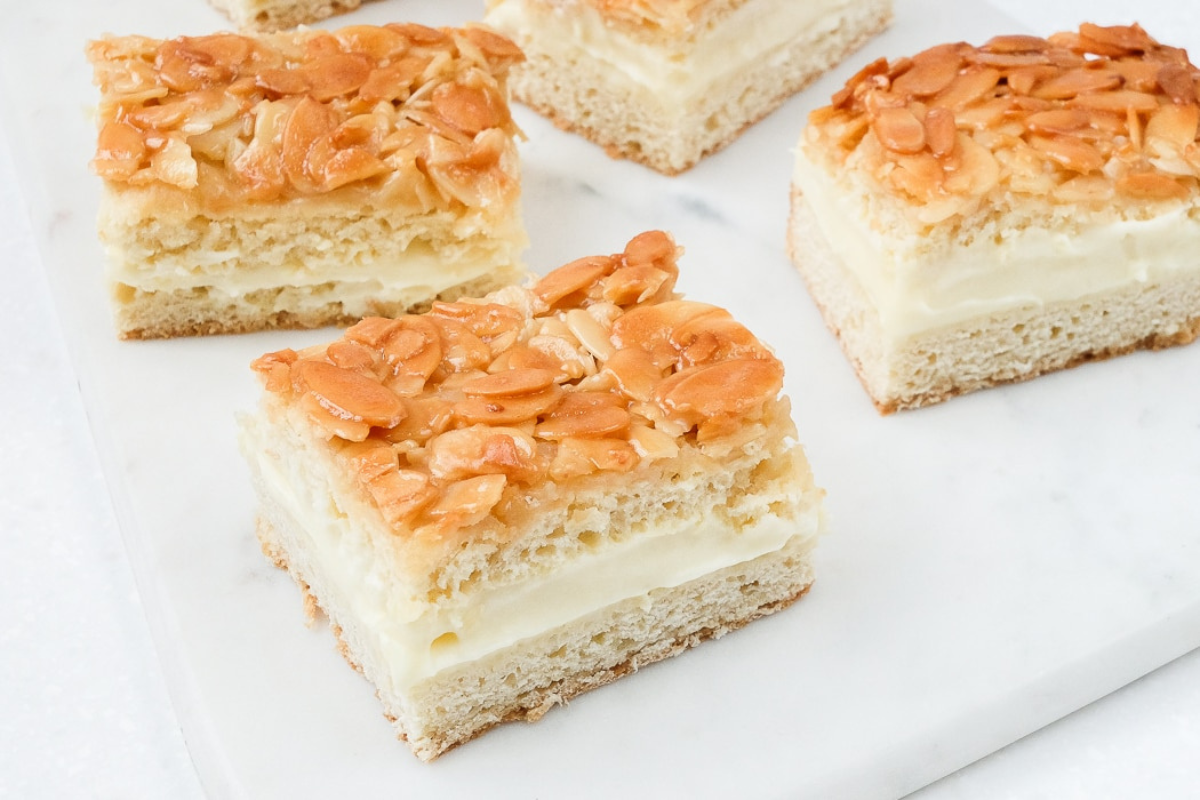While Germany boasts a diverse and delectable selection of cakes, the humble almond cake holds a special place in their culinary heritage. Its simplicity, versatility, and rich flavor profile have secured its position as a beloved dessert enjoyed across the country and beyond.

Photo: The Spruce Eats
Pinpointing the exact origin of German almond cake proves challenging, as regional variations and recipes have existed for centuries. However, historical evidence suggests that almond cakes were present in Europe as early as the Middle Ages. Almonds, a prized ingredient due to their rarity and symbolism of wealth and prosperity, were often incorporated into desserts reserved for special occasions. Early versions of German almond cake likely involved basic ingredients like flour, eggs, sugar, and ground almonds, baked in wood-fired ovens.
German baking traditions have evolved throughout the centuries, influenced by regional preferences and available ingredients. The incorporation of fruits, spices, and different types of flour has added diversity to the landscape of German almond cakes. The widespread availability of sugar in the 18th and 19th centuries further enhanced the appeal of these sweet treats, making them more accessible to the general population.
Beyond the delicious: The cultural significance of German almond cake
The charm of German almond cake goes far deeper than its delightful flavor. These delectable treats are intricately woven into the very fabric of German culture, becoming much more than just a dessert. They act as a cornerstone for various celebrations and traditions, holding a special place in the hearts of many.
One of the most prominent ways German almond cake manifests its cultural significance is through its presence at coffee klatches. These informal gatherings, often held in the afternoons, bring people together to socialize over sips of coffee and slices of cake. The act of sharing a slice of almond cake fosters a sense of community and togetherness, creating a warm and inviting atmosphere. It becomes a tangible symbol of hospitality and a way to bond with friends, family, and neighbors.

Photo: Kitchen Stories
Furthermore, German almond cake plays a vital role in marking special occasions throughout the year. Birthdays, a universal celebration of life, often see the presence of a delicious almond cake. During festive holidays like Christmas and Easter, specific variations of almond cake take center stage. For instance, Christstollen, a fruit and nut cake often coated in powdered sugar, becomes a staple on Christmas tables, adding a touch of sweetness to the festive spirit. These seasonal appearances solidify the association of almond cake with cherished memories and traditions, creating a sense of cultural continuity and belonging.
The cultural significance of German almond cake also lies in its ability to evoke a sense of nostalgia and comfort. The familiar taste and aroma often trigger memories of cherished moments spent with loved ones, fostering a sense of warmth and belonging. The sight of a beautifully decorated almond cake, perhaps reminiscent of childhood birthday celebrations or festive family gatherings, can evoke a sense of tradition and cultural identity.
German almond cake transcends its role as a mere dessert, becoming a cultural symbol deeply embedded in the fabric of German society. It fosters a sense of community, celebrates cherished traditions, and evokes precious memories, making it a beloved element of German culture that continues to delight and connect generations.
A symphony of flavors: Exploring variations of German almond cake

From the simple elegance of Mandelkuchen to the playful flavors of Bienenstich and the artistic marvels of Baumkuchen and Frankfurter Kranz, each variation offers a unique taste of German baking traditions and cultural heritage.
Mandelkuchen: This classic cake, literally translating to “almond cake,” embodies simplicity and elegance. Featuring a buttery dough base as its foundation, it is generously adorned with a layer of ground almonds, sugar, and often, a touch of zesty lemon. The resulting cake is a delightful harmony of textures and flavors, with the sweetness of the almonds beautifully complementing the rich, buttery base. Its simple elegance makes it a perfect accompaniment for afternoon coffee or tea, offering a delightful treat without overwhelming complexity.
Bienenstich: This iconic cake lives up to its name with a playful combination of textures and flavors. A sweet yeast dough forms the base, providing a soft and airy foundation. This is further complemented by a layer of creamy vanilla custard, adding a touch of smooth sweetness. However, the star of the show lies on top: a generous layer of caramelized almonds and honey. The caramelization creates a visually stunning golden brown color, resembling the sting of a bee, while adding a delightful crunch and depth of flavor. The contrasting textures and the interplay of sweet and savory notes make Bienenstich a truly unique and captivating experience.

Photo: Recipes From Europe
Baumkuchen: This visually stunning cake is a marvel of baking artistry. Unlike most cakes, it is built layer by layer, slowly rotating on a spit in front of a heat source. Each layer is made with a simple batter of flour, eggs, and sugar, and the resulting cake boasts a unique ringed appearance reminiscent of a tree trunk. The finished masterpiece is often adorned with a glaze of chocolate or apricot jam, adding a touch of color and sweetness. While not exclusively an almond cake, Baumkuchen often incorporates ground almonds into the batter, lending a subtle nuttiness that complements the other flavors. Its unique construction and striking appearance make it a centerpiece dessert, sure to impress and delight guests.
Frankfurter Kranz: This elegant cake hails from the city of Frankfurt and showcases the artistry of German baking traditions. The base is a ring-shaped masterpiece crafted from layered sponge cake and marzipan, a sweet almond paste. This base is then filled with a layer of creamy buttercream or jam, adding moisture and contrasting flavors. The cake is then adorned with a vibrant array of glazed fruits and candied almonds, creating a visually stunning and festive presentation. A final dusting of powdered sugar completes the picture, adding a touch of elegance and sweetness. While Frankfurt Kranz uses marzipan instead of plain almonds, it still showcases the versatility of almond-based flavors in German baking traditions. Its intricate construction and vibrant decorations make it a perfect centerpiece for special occasions, embodying the celebratory spirit of German culture.

